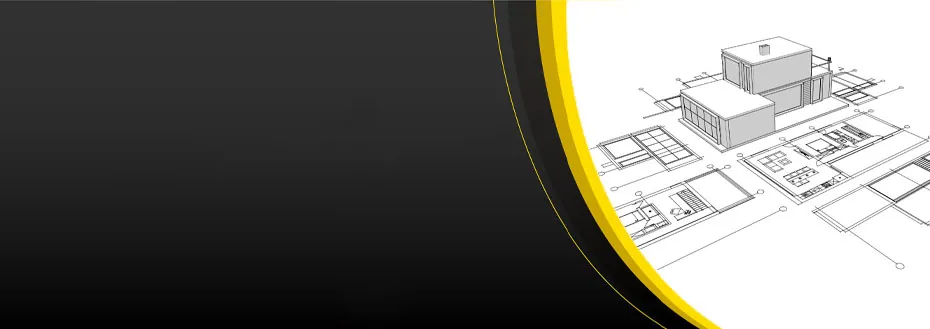When it comes to drafting specialization, we've evolved from the days of manual drafting to a digitalized era of designing powered by CAD software. Whether it's a colossal multistory building project or an intricate piece of mechanical equipment, CAD design and drafting services have revolutionized the way engineers create and visualize ideas. But why has CAD drafting become the go-to solution ? Why opt for CAD drafting over manual designs? In this article, we will dissect the benefits of CAD, compare them with manual drafting, and examine the unique offerings like 3D modeling, clash detection, and virtual walkthroughs.
The Art and Science of Manual Drafting
Manual drafting, also known as paper drafting, is the traditional method of creating designs using drawing boards, pencils, and drafting paper. This method is time-consuming, demanding a high level of detail and concentration, offering no room for mistakes. Imagine investing hours manually drafting a design, only to realize there is a critical error and then having to begin all over again. There have always been drawing tools to aid in manual drafting, yet they require substantial time and effort.
The Praxis of Manual Drafting
Manual drafting is a systematic process with several stages. The initial phase is about conceptualizing the design or idea, followed by creating preliminary sketches. The next stage involves refining these sketches into detailed drafts, which are then subjected to further revisions until a final, refined draft is created. The technicalities of manual drafting require precision and accuracy. Drafters employ a range of tools including, but not limited to, T-squares, set squares, protractors, compasses, French curves, and drafting machines. Different types of scales and mechanical pencils with varying lead hardness are also used to ensure the drawing's accuracy and clarity.
CAD Drafting - An Intersection of Technology and Precision Design
Computer-Aided Design (CAD) drafting, a convergence of technology and design, has created a paradigm shift in traditional drafting methods. This innovative discipline, backed by precision and propelled by technological advancements, has disrupted numerous industries, transforming laborious manual drafting into a streamlined and accurate process. CAD drawing services have simplified the design process, offering a faster, more accurate, and versatile approach to creating designs ranging from 2D diagrams to complex 3D models.
The essence of CAD drafting goes beyond mere digitization of design. It's a detailed procedure that employs sophisticated software to construct precise 2D and 3D models, diagrams, and technical illustrations. These graphical representations function as virtual blueprints, enabling professionals to visualize the final output in comprehensive detail, long before the commencement of production or construction.
The Mechanics of CAD Drafting
The proficiency of CAD drafting lies in its ability to manipulate and modify designs with extreme precision. It allows drafters to create complex geometrical shapes, apply material textures, and even simulate real-world forces on a design, thereby providing a comprehensive perspective of the project.
One of the key terminologies in CAD drafting is 'parametric modelling'. This technique allows drafters to define dimensions and relations between different elements of a design. Consequently, any modification in one part of the model automatically reflects in other related parts, ensuring consistency and accuracy in the design.
The Role of CAD Drafting in Various Industries
From the engineering field to the architectural landscape and even the fashion industry, the application of CAD drafting is far-reaching. For instance, in civil engineering, CAD drafting aids in the creation of topographic maps, site layout designs, and 3D visualizations of structures. Meanwhile, in mechanical engineering, it assists in the design of machinery parts, assembly lines, and production processes.
In architecture, CAD drafting expedites the creation of architectural blueprints, elevations, and cross-sections. It also aids in creating detailed 3D models of buildings, facilitating better understanding and communication of the design intent.
The Future of CAD Drafting
The future of CAD drafting looks promising with the advent of technologies like Building Information Modelling (BIM), 3D printing, and Virtual Reality (VR). BIM, for instance, takes CAD drafting a step further by adding information about the building's lifecycle, including its construction, maintenance, and demolition.
The pivotal role of CAD Drafing, particularly AutoCAD design services, in the design and manufacturing industries cannot be overstated. As technology continues to evolve, CAD drafting is likely to explore new frontiers, making design processes even more streamlined and efficient.
Technological Ascendancy of CAD Drafting Over Manual Drafting
Embracing the digital revolution, the domain of drafting has experienced a seismic shift from conventional manual techniques to advanced CAD systems. The benefits of CAD drawing are manifold and go beyond improved design quality and productivity.
Environmental Sustainability
CAD drafting contributes significantly to environmental sustainability. By eliminating the need for physical drafting materials, it reduces paper usage and waste production. This digital approach not only reduces the environmental footprint but also cuts down on the physical storage space required for traditional drafting materials.
Enhanced Data Security
With CAD drafting, designs and other sensitive data can be securely stored using digital encryption techniques. This eliminates the risk of physical damage or loss that could occur with manual drafting. In addition, access to the data can be controlled and monitored, providing an extra layer of security.
Integration Capabilities
CAD systems can be seamlessly integrated with other software and tools, extending their functionality. For instance, integrating CAD software with Building Information Modeling (BIM) systems can enhance building design and construction processes. Similarly, integration with Computer-Aided Manufacturing (CAM) systems can streamline the transition from design to production.
Reduction in Design Errors
CAD drafting significantly reduces the likelihood of design errors. With traditional manual drafting, errors often go unnoticed until the construction or manufacturing phase, leading to costly revisions. However, CAD software has error-detection features that identify design inconsistencies, clashes, or miscalculations, enabling designers to rectify them in the initial stages.
Client Communication and Approval
CAD designs can be easily converted into different formats, such as PDFs or JPEGs, and shared with clients or stakeholders. This feature, along with the ability to create realistic 3D renderings, helps in communicating design ideas effectively and obtaining client approvals faster.
Greater Accessibility
CAD drafting software is easily accessible, with many options available for both desktop and mobile platforms. This ensures that designers can work from anywhere, at any time, increasing flexibility and productivity. Moreover, the availability of various software options means that businesses can choose the one that best suits their needs and budget.
Closing Thoughts - CAD's Incontrovertible Lead in Engineering Designs
As you emerge from this detailed discourse, a compelling argument takes shape: CAD drafting services – whether it's 2D drafting, 3D modeling, or AutoCAD design and drafting services – have clearly demonstrated their superiority over manual drafting. This is visible in the precision of their designs, the efficiency of the process, and the ease of sharing, modification, and storage.
While manual drafting still retains a nostalgic allure for some, the pragmatic superiority and proven benefits of CAD design solutions clearly mark its ascendancy. The proficiency of CAD drafting, in embodying high degrees of design precision, operational efficiency, and offering a wealth of innovation possibilities including 3D CAD services, outweighs manual drafting in nearly every aspect. This forms a compelling argument for choosing CAD drafting over manual drafting, every time. When you decide whether to use the immense capabilities of CAD drafting for your next project or that of manual drafting, we encourage you to think about these ideas.
If you are looking for a reliable and efficient HVAC service provider, then you have come to the right place. Get in touch with us today!
Contact UsAvail best-in-class services at affordable rates
Our Customers





Key Differentiators
Case Studies
-
Flatworld Solutions provided customized CNC programming using MasterCAM
-
Flatworld Provided CFD Simulation Services to a Leading HVAC Products Manufacturer
-
Flatworld Solutions Offered Mechanical Instrument Drafting and Detailing Services to an Engineering Consultant
-
Flatworld Solutions Offered US Client with 2D to 3D Mechanical Legacy Drawing Conversion
-
Flatworld Solutions Provided Reverse Engineering of Machine Parts to a Client
Join the growth phase at Flatworld Solutions as a Partner
Service distributorship and Marketing partner roles are available in select countries. If you have a local sales team or are a person of influence in key areas of outsourcing, it's time to engage fruitfully to ensure long term financial benefits. Currently business partnerships are open for Photo Editing, Graphic Design, Desktop Publishing, 2D and 3D Animation, Video Editing, CAD Engineering Design and Virtual Walkthroughs.
Reach out to us for a quick direct response from decision makers at the Flatworld Solutions global team.

USA
Flatworld Solutions
116 Village Blvd, Suite 200, Princeton, NJ 08540
PHILIPPINES
Aeon Towers, J.P. Laurel Avenue, Bajada, Davao 8000
KSS Building, Buhangin Road Cor Olive Street, Davao City 8000



